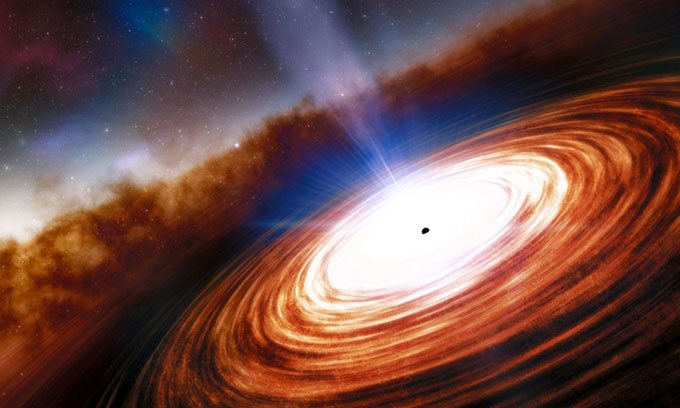Quasite J0313-1806 contains supermassive black holes 1.6 billion times heavier than the Sun and formed in a few hundred million years.
Scientists have found the oldest and most distant quasar in the universe named J0313-1806. The discovery, announced at the 237th meeting of the American Astronomical Association on January 12, provides new information about the early universe.
Quasars are among the most energetic and brightest objects in the universe. Scientists believe they form when supermassive black holes swallow surrounding material such as gases or stars, creating a large orbiting disk of dust.
J0313-1806 is more than 13 billion light years from Earth, which means that we do not see images of this quasar after the Big Bang until about 670 million years ago, when the universe was only 5% of his current age. The quasar’s supermassive black hole is 1.6 billion times heavier than the Sun.
Scientists do not fully understand why a mass object too was formed in such a short time. “The black holes created by the first large stars in the universe cannot grow to this point in a few hundred million years,” said Feige Wang, an expert from the University of Arizona and senior author of the ‘study.
According to a theory of black holes, they form when a star explodes, causes a supernova explosion and then collapses. Over time, these black holes merge and become supermassive black holes. However, this process will hardly happen so quickly.
Some earlier studies have suggested that massive stars in the beginning of the universe were mostly made of hydrogen, devoid of other elements commonly found in later stars. This allows old stars to form faster, thus fueling the black hole. According to another model, dense star clusters can also collapse and form black holes. However, the black hole in quasar J0313-1806 is too large and cannot be explained by the above assumptions.
“The seeds of the black hole J0313-1806 must have been formed by a different mechanism. In this case, a mechanism by which large amounts of cold primordial hydrogen directly collapsed into the black hole,” Xiaohui Fan, co-author of the study, associate professor of astronomy at the University of Arizona, said.


